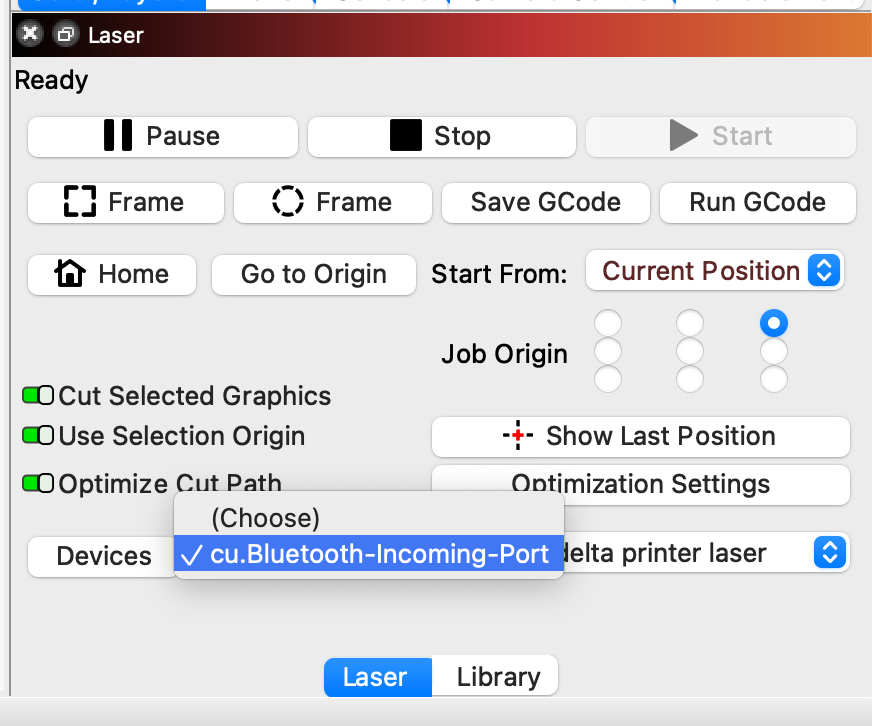Troubleshooting: Serial Port Problems
Depending on the type of device you have and the connection method you're using, you may have a dropdown in the Laser window to choose the serial port. The screenshot below highlights its location between Devices and the name of the active device.
LightBurn will attempt to automatically select the correct serial port, but you may need to manually select it from this dropdown. When connected, the Disconnected message in the top left corner of the Laser window will change to Ready. If you are using a GCode-based laser, you will see a startup message in the Console Window.
You may need to right-click the Devices button in the Laser window to refresh the list of available ports.
CU.BLTH or cu.bluetooth-incoming-port¶
Ports with these or similar names are for Bluetooth connections, and are not the correct ports for a USB connection. If you select one of these ports, you may see a Ready message in the Laser window, but your laser will be unresponsive.
If you see these ports but not a USB connection, you probably need to install the CH340 driver, or refresh the list of available ports.
How To Ignore Unwanted Ports¶
This will be unnecessary for most people, but if LightBurn is attempting to connect to serial ports for devices other than your laser and it becomes a problem, you can specify ports for LightBurn to ignore.
Method One: UI¶
Starting with LightBurn 1.7, right-clicking the dropdown will bring up a context menu allowing you to include or exclude ports.
To exclude a port:
- Select the port in the dropdown.
- Right-click the dropdown and choose Exclude <portname>.
To include an excluded port:
- Right-click the dropdown and choose Show Excluded.
- Select the port you want to include and choose Include <portname>.
Method Two: PortExclude.txt¶
- Go to File → Open Prefs Folder to open LightBurn's prefs directory.
- Create a file in this folder called
PortExclude.txt– use this name exactly, including capitalization. - In the file you just created, list the ports you want to exclude, exactly as they show up in the port selection drop down in LightBurn. Each port should be on its own line.
- Save the file.
LightBurn will now ignore the ports you've told it to filter out.

